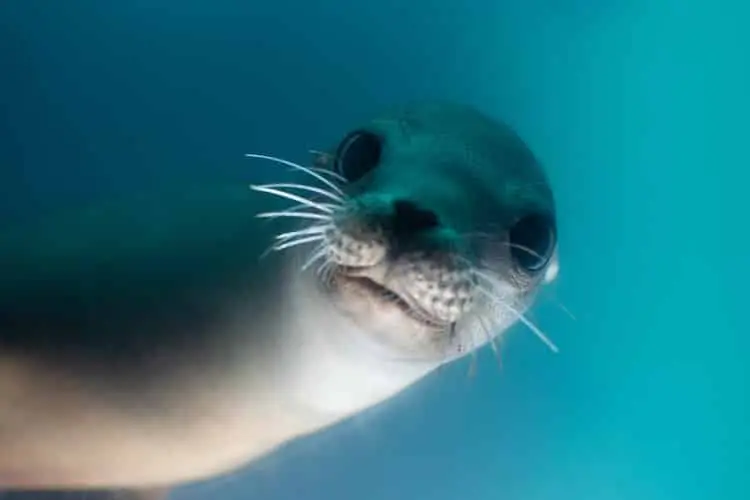Do you want to swim with seals? We have the perfect guide to the top destinations for seal encounters around the world. And in the process you can learn about these cute critters!
There are 33 species of pinnipeds alive today, most of which are known as seals.Pinnipedia comprises three primary categories: the walrus; the eared seals, encompassing various types of fur seals and sea lions; and the earless seals, commonly referred to as true seals.
Despite the name, earless seals do have ears but they’re just hidden beneath the surface of their skin.
Interested? Read on…
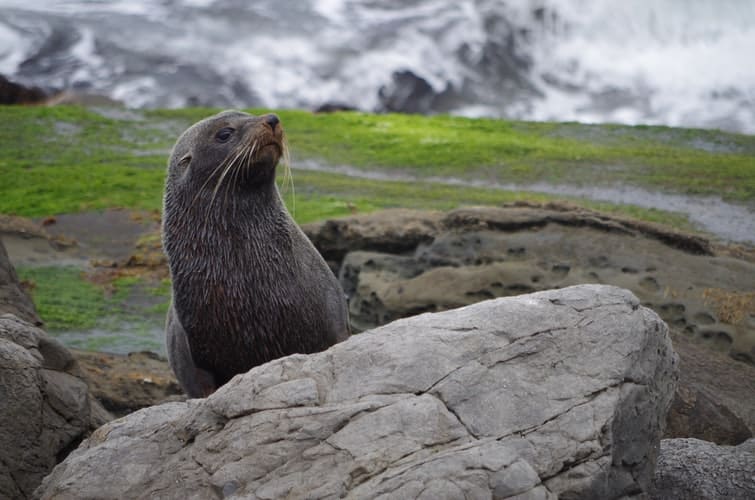
Types of Seals
Pinnipeds are distributed across every continent globally, with a majority of species inhabiting cold-water regions. These marine mammals stay warm through thick layers of fat, commonly known as blubber, and dense fur (with the exception of the Walrus). Seals, sea lions, and the walrus collectively fall under the category of pinnipeds, a term derived from the Latin phrase “fin-footed.”
Sea Lions
Sea lions are distinguished by external ear flaps, long foreflippers, the ability to ambulate on all fours, short and dense hair, as well as a sizable chest and belly. Alongside fur seals, they belong to the family Otariidae, which is categorized as eared seals.
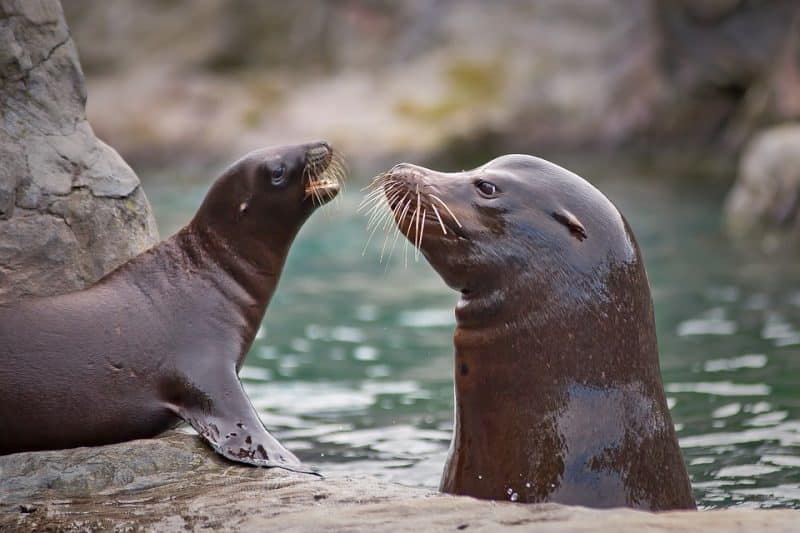
Sea lions gather in sizable colonies on rocks and sandy shores throughout the islands. They venture into the water for feeding and to regulate their body temperature. Equipped with small flaps instead of outer ears, sea lions stand as the most prevalent mammal in the Galápagos, holding a crucial role in the ecosystem. Their susceptibility to the impacts of climate change on ocean currents affects the abundance of their fish prey. Additionally, they face the unfortunate threat of bycatch in fisheries, significantly contributing to their vulnerable conservation status.
Earless Seals
Among the three primary groups within the seal lineage, Pinnipedia, earless seals, also known as phocids or true seals, form a distinct category. Referred to as crawling seals to distinguish them from fur seals and sea lions, these seals lack external ear flaps.
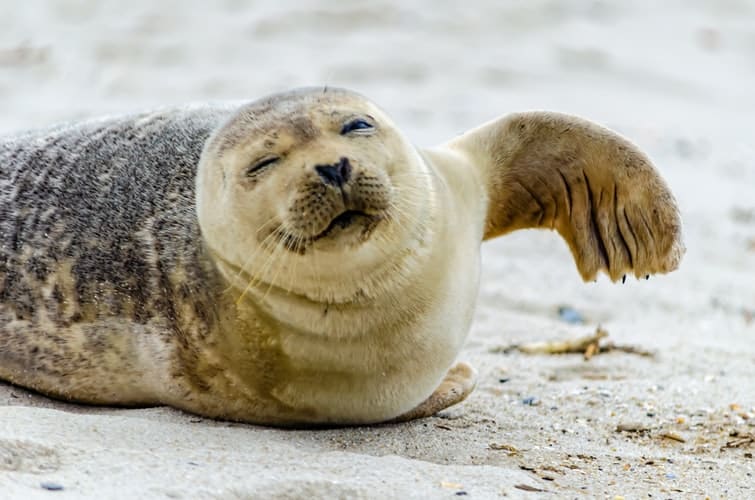
The are the most abundant in the Northern Hemisphere and are fairly small, with little difference in size between the sexes.
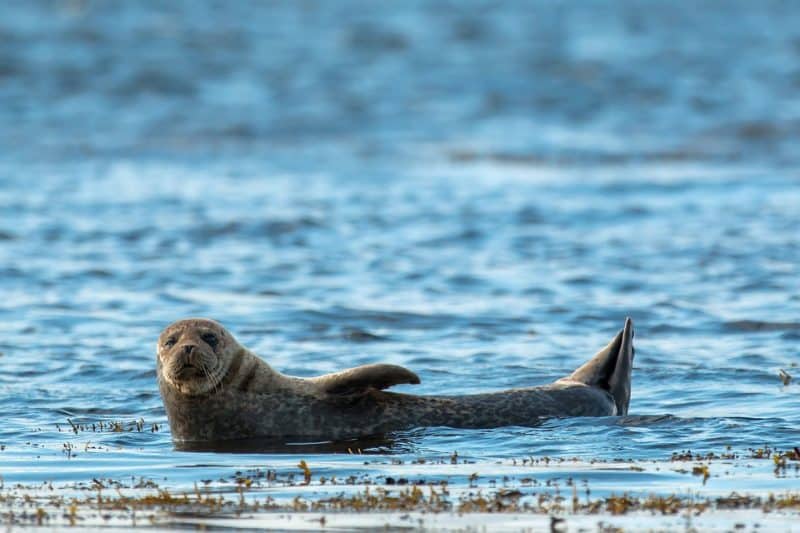
During swimming, a true seal employs its forelimbs to navigate in the water, propelling itself forward with side-to-side movements of its hind limbs. As the hind flippers lack the ability to move forward, these seals maneuver on land by wriggling on their bellies or pulling themselves forward with their front limbs.
Eared Seals
An eared seal plays a significant role in the marine mammal family Otariidae, one of the three categories of pinnipeds or seals. Referred to as sea lions or fur seals, they are distinct from true seals and the walrus. Their primary mode of propulsion involves a rowing motion of their front flippers. Due to the flexibility of their hind flippers, which can be turned forward, eared seals can utilize all four limbs when traversing on land.
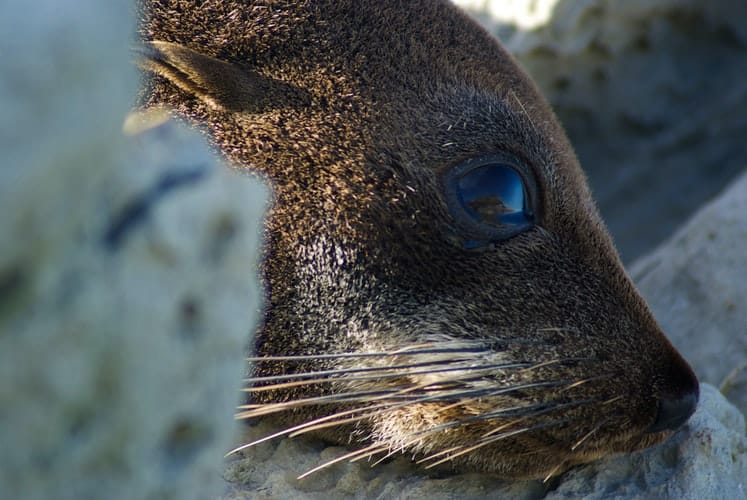
Distinguishing Characteristics between Sea Lions and True Seals: True seals exhibit predominantly stubby front feet, featuring thinly webbed flippers with a claw on each small toe. In contrast, sea lions possess mostly skin-covered, elongated fore flippers. Sea lions also have small flaps for outer ears, while “earless” or “true” seals lack external ears altogether. Notably, sea lions are known for their vocal nature, emitting various sounds, whereas seals are quieter, communicating through soft grunts. Both species alternate between aquatic and terrestrial environments, but seals are more adept at living in water than on land.
Walruses
The walrus, a large flippered marine mammal, is widely distributed around the North Pole in the Arctic Ocean and subarctic seas of the Northern Hemisphere.
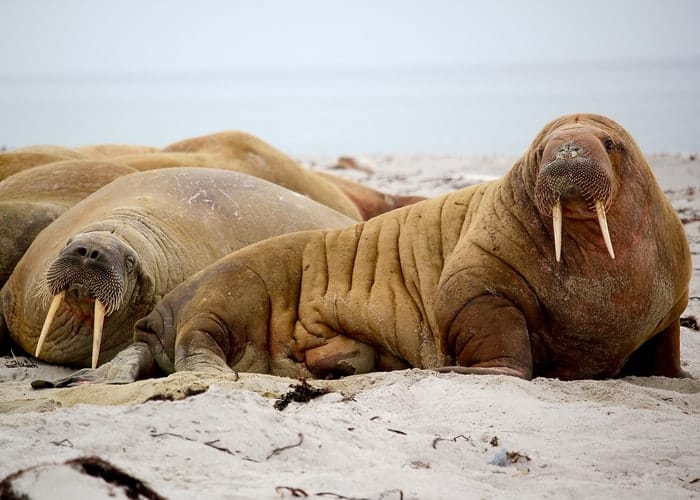
They are the largest of male elephant seals (genus Mirounga leonina) , coastal California (including Baja California, Mexico) and South America, which can reach a length of 6.5 metres (21 feet) and a weight of 3,700 kg (8,150 pounds).
Characteristics
| COMMON NAME: Seals |
| SCIENTIFIC NAME: Pinnipedia |
| DIET: Carnivore |
| AVERAGE LIFE SPAN IN THE WILD: Up to 30 years |
| SIZE: 3 feet to 20 feet long |
| WEIGHT: 100 pounds to 4.4 tons |
The streamlined bodies of seals feature four limbs which have been modified to function as flippers.
Geographic Distribution
Seals predominantly inhabit polar and subpolar regions, specifically the North Atlantic, the North Pacific, and the Southern Ocean, while remaining absent from Indomalayan waters. Monk seals and certain otariids thrive in tropical and subtropical waters. Generally, seals thrive in cool, nutrient-rich waters with temperatures below 20 °C (68 °F). Even those residing in warm or tropical climates select areas that experience cooling and nutrient enrichment due to current patterns. Monk seals are the exception, dwelling in waters that are not typically cool or nutrient-rich. The Caspian seal and Baikal seal are confined to large landlocked bodies of water, namely the Caspian Sea and Lake Baikal, respectively.
Habitat
The majority of seal species are dependent on marine habitats, with some venturing into estuaries and rivers in search of food. Most seals are inhabitants of the cold waters in the Southern and Northern Hemispheres.
Breeding and Lifespan
Seals, like all mammals, are warm-blooded and nurse their young, akin to humans. The ancestors of seals transitioned from land to sea millions of years ago, evolving specialized traits to adapt to their aquatic environment. These marine mammals mate and give birth on shores, seeking refuge on beaches to evade predators like killer whales and sharks.
During the breeding season, mothers such as the harbor seal fast and nurse their pups intermittently. Between nursing sessions, females leave their young onshore while they forage at sea, with these foraging expeditions lasting from a day to two weeks, contingent on food availability and foraging site distance. During the mother’s absence, the pups undergo fasting.
Lifespan
If a seal surpasses the vulnerabilities of puphood, it generally becomes a long-lived creature. Both the Grey and Common seals have been documented to live over 30 years, with reports of a female Grey seal near the Shetland Isles in Scotland reaching the age of 46.

Behavior
Pinnipeds lead an amphibious lifestyle, well-adapted for both land and water activities. They primarily inhabit the water but come ashore for mating, raising young, molting, resting, thermoregulation, and evading aquatic predators. Some species are known to embark on extensive migrations, particularly in response to significant environmental changes such as El Niño events or alterations in ice cover.
Intelligence
Pinnipeds showcase cognitive abilities, demonstrating comprehension of simple syntax and commands when trained using artificial sign language.
Diet
All seals are carnivorous, predominantly relying on fish captured at sea. They exhibit exceptional hunting skills for fish and other marine prey.
Communication
Pinnipeds display a wide array of vocalizations, including barks, grunts, rasps, rattles, growls, creaks, warbles, trills, chirps, chugs, clicks, and whistles. While most vocalizations are audible to the human ear, some instances, such as a captive leopard seal emitting ultrasonic calls underwater, challenge conventional understanding. Additionally, the vocalizations of northern elephant seals may produce infrasonic vibrations, occurring both in air and underwater.
Conservation Status
The conservation status of seals remains a subject of debate, as some species face endangerment, while others, like the gray seal, witness population growth. Conservation efforts are essential, particularly for vulnerable species with dwindling numbers. Ongoing research underscores the importance of preserving their natural habitats, which face threats from hunting, pollution, and reduced food availability due to fishing activities.
Threats to Population
Historically, pinnipeds, notably those sought for their fur, were heavily targeted by hunters, leading to the extinction of some species such as the Caribbean Monk seal. Presently, climate change poses the most significant threat, especially to species dependent on sea ice for breeding and foraging, as seen in various Arctic seals and walruses.
Fun Facts
Despite species differences, all seals possess feet shaped like fins, contributing to their exceptional swimming abilities. The term “pinniped” itself means “fin-footed” in Latin, emphasizing their status as semi-aquatic marine mammals.

- Some species like the elephant seals have evolved the ability to hold their breath for up to two hours and dive to depths of more than 6,500 feet looking for food (the elephant also has amazing communication skills, click here to learn all about them.).
Can you swim with Seals?
Of course! With respect for the seals and their environment, it is a truly special experience to witness the way seals move underwater.

While pups love swimming and playing with divers and snorkelers, it is important to keep a respectful distance from adult sea lions.
Where to swim with seals?
Have a look at these locations and let us know which is your dream holiday location to swim with seals!
1. Duiker island, South Africa
Cape Fur seals occur naturally on islands around the southern African coast and are found nowhere else in the world. Duiker Island in Hout Bay is home to about 5 000 seals and lies within the Karbonkelberg marine protected area, part of Table Mountain National Park, Cape Town. A breathtaking location to swim with seals!

Operators:
Animal ocean Seal Snorkeling
Cape Town Bucket List/ Seal Snorkeling
Seal Island
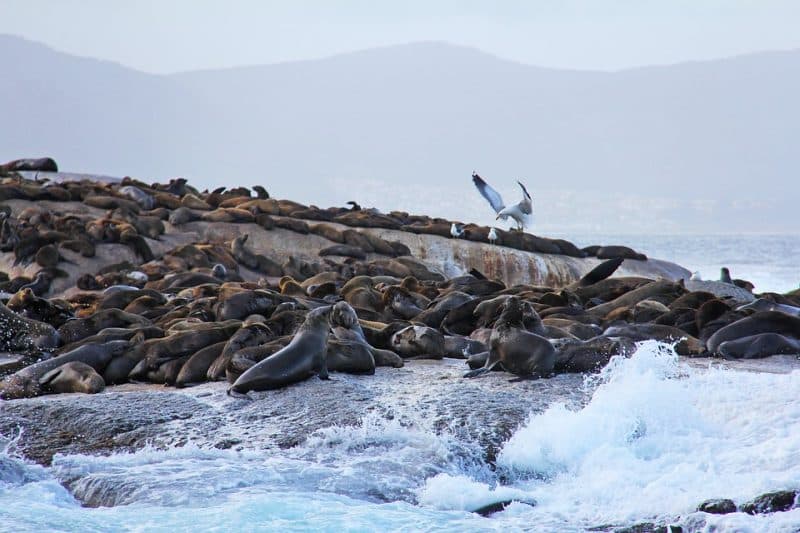
Not too fond of swimming but still interested in seals? Then take a trip to False Bay’s very own Seal Island where a spectacle of seals inhabit the stormy bay. This island supports the largest Cape Fur Seal Arctocephalus pusillus colony in the Western Cape; up to 75 000 seals occur.
Operators:
2.Baja California, Mexico.
Swimming with sea lions was exhilarating and rewarding. The best time to interact with the California Sea Lions in Baja California Sur is off the breeding season. Breeding season takes place during the hot months of June, July and August. In preparation, adult males make their way to the breeding grounds, where each establishes a territory for himself. Females are free to move between the territories and choose their favorite.

Operators:
3.Kaikoura, New Zealand.
Three types of seal breed in New Zealand: fur seals, sea lions and elephant seals. Leopard seals also visit. You can see fur seals sleeping, playing and swimming at Wellington’s Red Rocks, Kaikōura in the South Island, and other sites.

Operators:
4. Galapagos islands, ecuador
Sea lions represent a distinctive mammalian presence on the Galapagos Islands. While mature sea lions exhibit intelligence and charm, it is their endearing pups that captivate attention, charming hearts with their adorable faces and a curious, sometimes playful demeanor. Surprisingly at ease around humans, the Galapagos sea lion pups frequently seek interaction, approaching swimmers and snorkelers with apparent enjoyment in the waters surrounding the islands.

Operators:
5.Farne Islands, United Kingdom.
The Farne Islands are located between Bamburgh and Seahouses on the Northumberland coast and are home to one of the largest seal colonies in the UK with around 1,000 seal pups born each year.
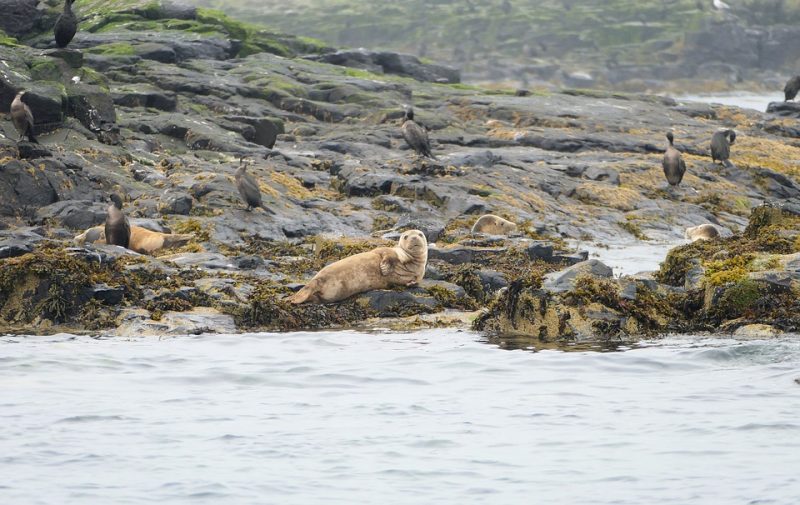
Operators:
New Horizons snorkel and dive centre
Summary on Seals
Ready to purchase a pair of snorkel masks and get ready to start planning your dream trip to swim with Seals around the world?
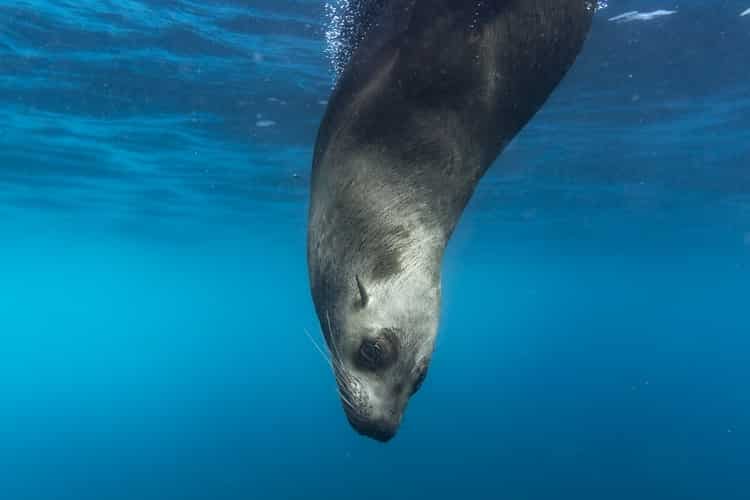
If you dream of encountering more marine animals in the wild, have a look at our blogs featuring where to swim with whales around the world, best places to dive with Dolphins and !
- Top 10 Cutest Fish in the World - April 15, 2024
- 10 Most Endangered Animals - April 15, 2024
- 16 Top Predators in the Food Chain - April 12, 2024

